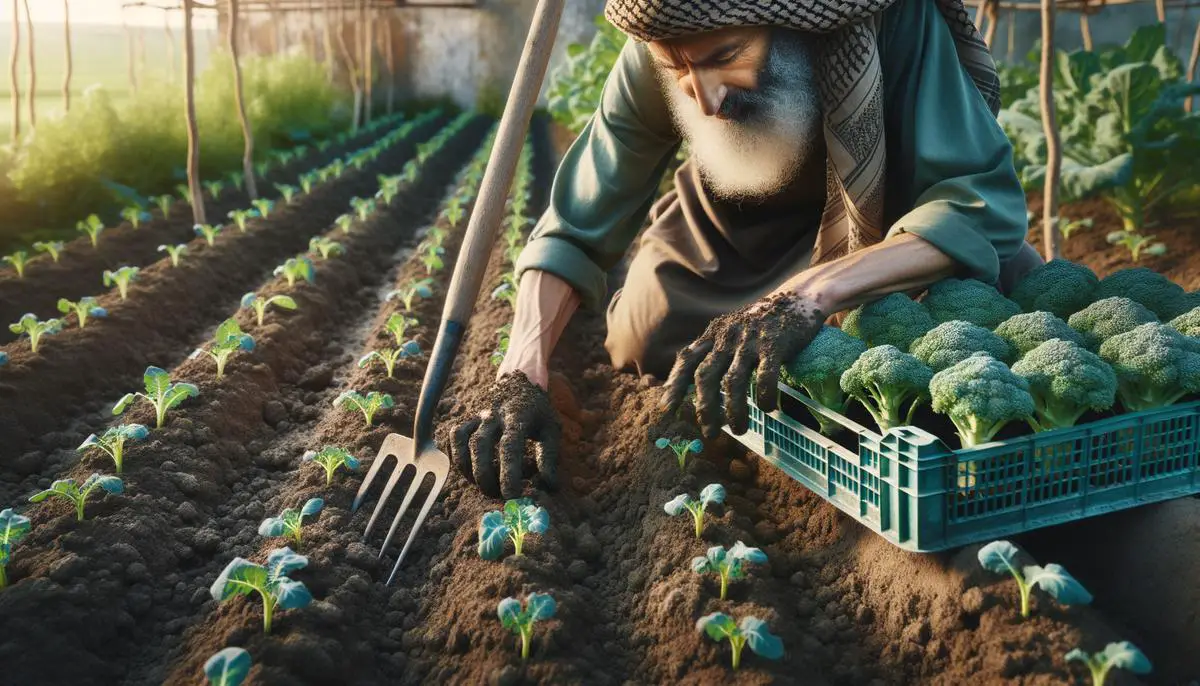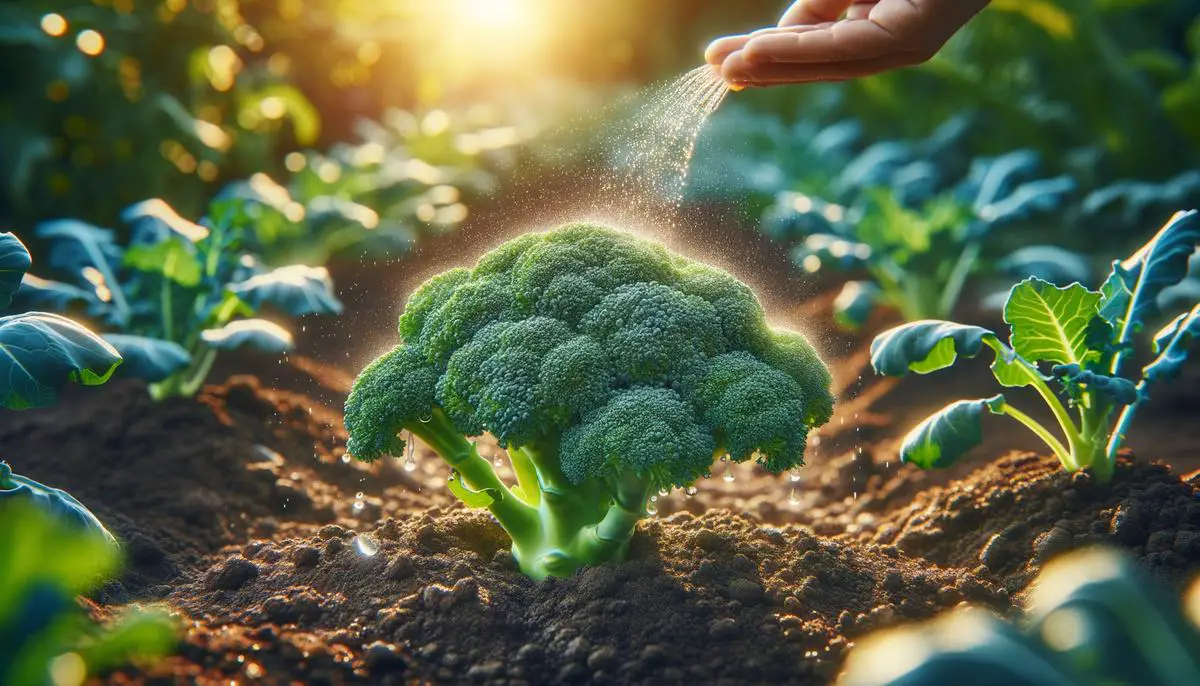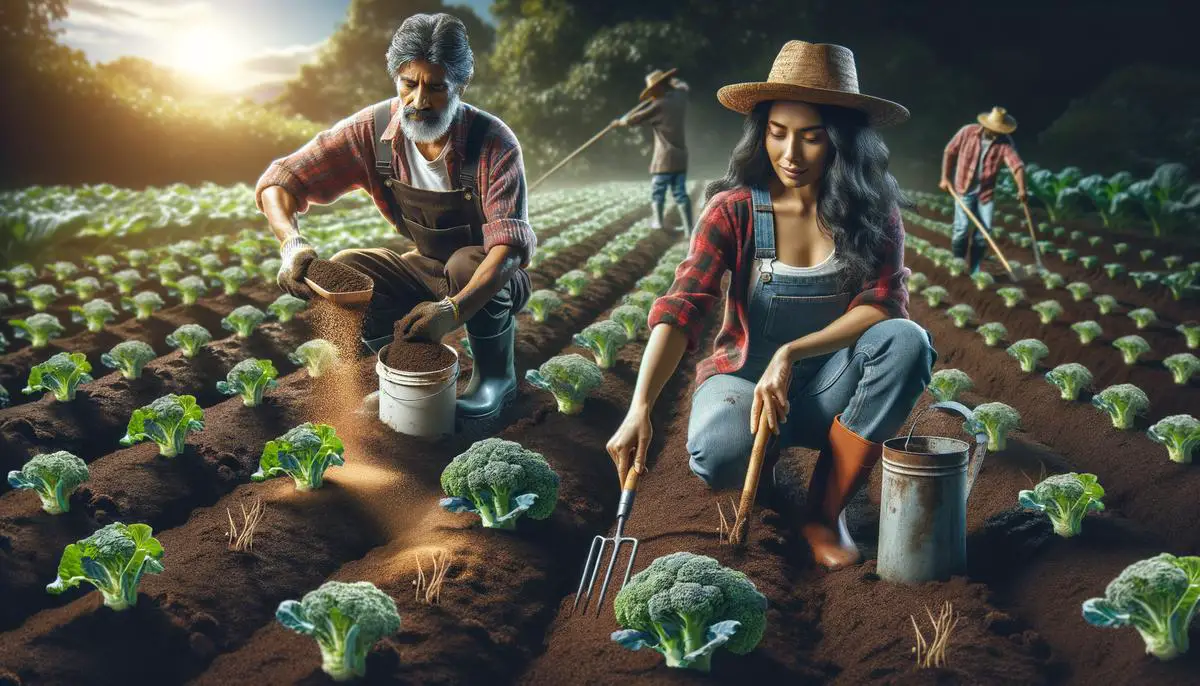Growing broccoli in your own garden is a rewarding endeavor that brings fresh, nutrient-rich vegetables right to your table. The success of your broccoli plants begins long before they sprout, with the preparation of their growing environment being a crucial step. This article serves as a comprehensive guide, covering everything from choosing the right spot in your garden to the intricacies of watering and caring for your plants. By adhering to these guidelines, you’re setting yourself up for a flourishing broccoli harvest.
Soil Preparation for Broccoli
How to Prepare Soil for Planting Broccoli
Reader Poll: What online courses would interest you?
Broccoli is a nutritious vegetable that’s both delicious and easy to grow in your own garden. To ensure your broccoli thrives, preparing the soil correctly is a key step. Follow these steps, and you’ll have a foundation ready for planting healthy broccoli plants.
Choosing the Right Spot
First, it’s essential to select the best location in your garden. Broccoli requires full sunlight for at least 6-8 hours a day, so choose a spot that gets plenty of sun. Also, ensure the area has good drainage to prevent water from pooling, which could harm the roots.
Testing and Amending the Soil
Before planting, test your soil’s pH. Broccoli prefers slightly acidic to neutral soil, with a pH between 6.0 and 7.0. You can easily test this with a home testing kit available at most garden centers. If your soil is too acidic, you can add lime to raise the pH. If it’s too alkaline, incorporating sulfur can help lower it to the desired range.
Subscribe to our newsletter!
Adding Organic Matter
Broccoli plants are heavy feeders, so enriching the soil with organic matter is crucial for their growth. Mix in well-rotted manure or compost into the top 6-12 inches of soil. This step not only feeds your plants but also improves soil structure and drainage.
Ensuring Proper Fertilization
Additionally, broccoli benefits from balanced fertilization. Use a 10-10-10 (NPK) fertilizer, applying it according to the package instructions before planting. This will provide the essential nutrients your broccoli needs to develop strong roots, stems, and heads.
Preparing the Planting Beds
Finally, create raised beds or smooth the soil surface to prepare for planting. Raised beds improve drainage and can help combat soil compaction. Ensure the beds are at least 4 inches high and space them about 18 inches apart. This spacing allows adequate room for the broccoli to grow and for air to circulate, reducing the risk of disease.
By following these steps to prepare your soil, you’re setting the stage for your broccoli plants to flourish. With the right location, proper soil pH, enriched soil, balanced fertilization, and prepared planting beds, your broccoli will have the best possible start. Now, you’re ready to plant and grow a bountiful broccoli harvest in your garden.

Planting Calabrese Broccoli
Planting Calabrese Broccoli: Timing and Techniques
After selecting an ideal spot, adjusting the soil pH, enriching it with organic matter, and ensuring it’s well-fertilized and prepared, you’re ready to dive into the planting phase for Calabrese broccoli. This part of the process is crucial for yielding a bountiful harvest. Let’s break down when and how to plant your Calabrese broccoli for maximum success.
When to Plant
Timing is everything when it comes to planting Calabrese broccoli. For a fruitful harvest, you have two ideal planting windows. If you’re aiming for a fall harvest, plant your seeds outdoors about 85 to 100 days before the first expected fall frost. Typically, this means planting in late summer, as the cool fall temperatures help enhance the broccoli’s flavor.
For those looking to enjoy their broccoli in spring, start your seeds indoors about 5 to 6 weeks before the last expected spring frost. Then, transplant them outdoors 2 to 3 weeks before the last frost date. This early start ensures your plants have a head start, leading to an earlier harvest in late spring to early summer.
How to Plant
Now, let’s get into the actual planting process. If you’ve started your seeds indoors, ensure your seedlings are hardened off before transplanting. This means gradually acclimating them to outdoor conditions over the course of a week to prevent shock.
When planting your Calabrese broccoli, whether direct sowing outdoors or transplanting seedlings, follow these steps:
- Spacing is Key: Plant seeds or seedlings about 18 to 24 inches apart in rows. This spacing allows enough room for each plant to grow and mature fully, leading to a more substantial harvest.
- Planting Depth: For seeds, plant them 1/2 inch deep in the soil. If you’re transplanting seedlings, position them in the ground at the same depth they were in their pots, ensuring the soil level is just at the base of the plant’s stem.
- Water Wisely: After planting, water your broccoli plants gently but thoroughly. Maintaining consistent soil moisture is vital, especially in the early stages of growth. Aim for about 1 to 1.5 inches of water per week, whether through rainfall or manual watering.
- Mulch for Moisture and Temperature Control: After planting, apply a layer of mulch around your plants. This helps retain soil moisture, keeps the soil temperature stable, and prevents weeds from taking over.
By following these guidelines, you’re setting your Calabrese broccoli up for success. Remember, broccoli thrives in cooler temperatures, so keeping an eye on the weather and providing some shade during hotter days can prevent bolting and ensure your plants remain healthy and productive. Happy planting, and get ready to enjoy the delicious rewards of your gardening efforts!

Broccoli Watering and Care
Watering Best Practices for Broccoli Plants
Watering your broccoli plants correctly is crucial for their growth and the quality of the harvest. Broccoli requires consistent moisture to thrive, but like many plants, it dislikes soggy roots. Here’s your go-to guide to getting it just right.
Consistent Watering Schedule
Aim to keep the soil consistently moist but not waterlogged. During the growing season, this typically means providing about 1 to 1.5 inches of water per week. However, this can vary based on weather conditions. Hot, dry periods may necessitate more frequent watering, while rainy spells might mean you can skip your scheduled watering times.
Deep Watering Techniques
When you water, do so deeply. This method encourages the roots to grow deeper into the soil, making the plants more drought-resistant and sturdy. Shallow watering, on the other hand, can lead to shallow roots which are more vulnerable to drying out. Try to penetrate the top 6 to 8 inches of soil, which is where the majority of the broccoli’s roots are.
Best Time to Water
Water your broccoli plants in the morning. This gives the leaves time to dry out during the day, reducing the risk of diseases like powdery mildew or root rot. Evening watering is less ideal because it can lead to moisture sitting on the leaves all night long, which can encourage disease.
Mulching Matters
Mulch around your broccoli plants to help maintain soil moisture levels and keep the soil temperature stable. Organic mulches, such as straw or wood chips, not only retain moisture but also break down over time, improving soil quality. Aim for a 2 to 3-inch layer of mulch around the base of the plants, being careful not to let it touch the stems directly to avoid rot.
Monitoring Moisture Levels
Keeping an eye on the soil moisture is more reliable than sticking to a rigid watering schedule. Use your finger to check the moisture level; if the top inch of soil feels dry, it’s time to water. During especially hot or windy days, check moisture levels more frequently, as plants can become thirsty quickly.
Adjust for Growth Stages
As your broccoli grows, its water needs can change. Seedlings require gentle, consistent moisture to establish. Mature plants, especially those nearing harvest, may need increased water to support their growing florets. Monitor and adjust your watering practices as your plants mature.
Avoid Overhead Watering
Whenever possible, use a soaker hose or drip irrigation to water at the soil level rather than overhead sprinkling. This method minimizes water wastage through evaporation and keeps the leaves dry, further reducing the risk of leaf diseases.
Signs of Under or Over-Watering
Lastly, keep an eye out for the tell-tale signs of water stress. Wilting, yellow leaves can indicate both under and over-watering. Check the soil moisture to diagnose the problem correctly. Adjust your watering practices accordingly to ensure your broccoli plants remain healthy and productive.
By following these watering best practices, you’ll provide the ideal environment for your broccoli to flourish. With proper care, your plants will produce crisp, tasty florets that are a testament to your gardening skills. Remember, attentive watering is key to a bountiful harvest, so give your broccoli the moisture it needs to thrive.

By meticulously preparing the soil, choosing the optimal planting times, ensuring proper watering, and providing the necessary care, you can cultivate healthy broccoli plants that yield delicious florets. The attention to detail and adherence to good gardening practices discussed here will greatly influence the quality and quantity of your broccoli harvest. Remember, the effort you put into preparing and maintaining the environment for your broccoli plants pays off when you’re able to enjoy the fruits of your labor. Happy gardening!

